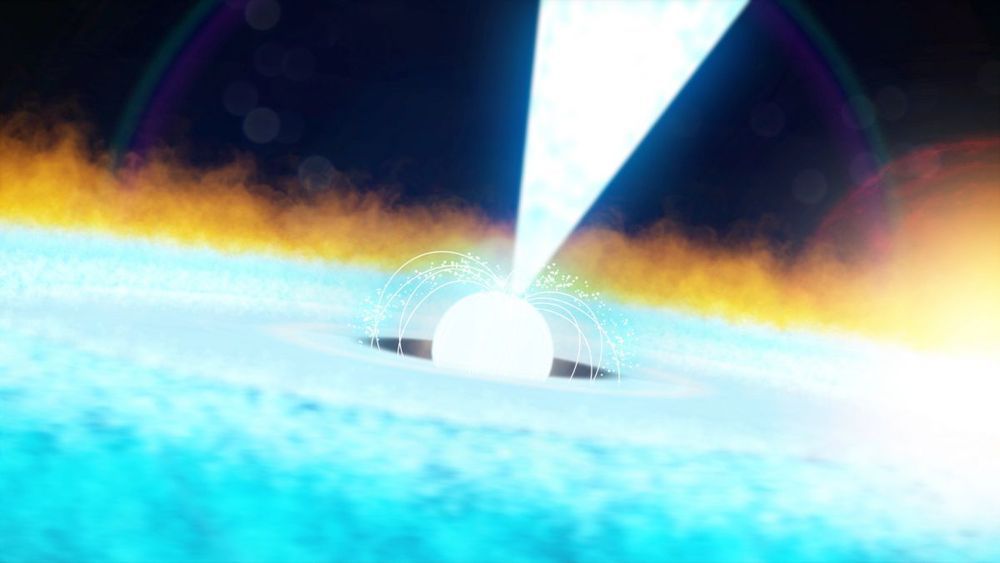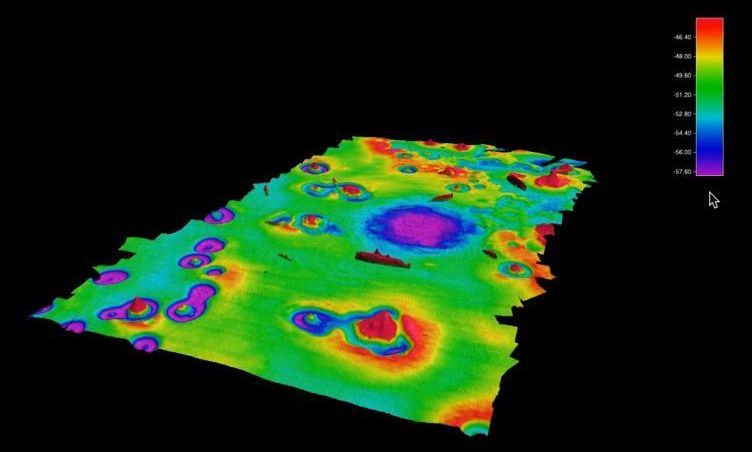To solve the problem of Japan’s ageing workforce, tech companies have developed exoskeletons that help older workers continue to do heavy manual labour.


Atomic physicists at NASA are working to create an exotic state of matter in space 🤯
Via Seeker
While these “moonshots” are still some years away, there are viable applications of 5G in the near term. South Korea launched the world’s first commercial 5G network in April and has seen data transfer rates rise from 50 megabits per second to over 700 Mbps. This enables the delivery of augmented reality, virtual reality and AI-enhanced real-time sports content.
With the arrival of next-generation mobile networks, new services like remote surgery will be suddenly feasible. More immediately, expect a boom in video traffic and augmented reality content.

A twisted little neutron star devoured chunks of its stellar twin, revealing a never-before-seen phenomenon to scientists watching on Earth.
Unlike most objects in space (including other neutron stars and planet Earth), neutron star GRO J2058+42 doesn’t have two simple magnetic poles at its north and south ends. Instead, it has a distorted magnetic field, with warped regions of intense magnetism sprinkled across the object’s surface.
It has transformed the country since the introduction of a universal healthcare system in 2001.
🔎 Learn more about infectious diseases: https://wef.ch/2Io98fA

Wow, the shit flies are flying out of the trash cans of Earth… I myself do not desire the thought of man and machine becoming one literally bolted together. But only as Singularity has been now for centuries.
For centuries every technological marvel of the era man became the brain of the covered wagon the bicycle the car the train the Plane now Rocket ships.
Each machine man had to become one with it for it to work. Mans brain became machine like-calculating to operate these miracles of each generation.
NOW Suddenly on Google of all places these nay sayers with totally bogus reasoning are loudly speaking against Transhumanism and even loudly against Immortality, of which the likes of Nikola Tesla literally forcast-Prophesy…
So what say Ye about these new Johnny get your Gun and jump on what I now say is our collective vehicle and let us call our vehicle the Band Wagon.
They, so many now are joining the wave started by Who??? Many, such as the De Grey, Gennady Stolyarov, Ray Kurzweil, Jim Strole and Bernadeane and Ilia Stambler and the list could go on.
Now many garner attention by saying the same forecast the same words of Ray or De Grey then they go on tour.

Maze Ransomware operators claim responsibility for another cyber attack, this time against leading wire and cable manufacturer Southwire Company, LLC (Southwire) from Carrollton, Georgia.
Southwire is one of North America’s leading wire and cable makers, “building wire and cable, utility products, metal-clad cable, portable and electronic cord products, OEM wire products and engineered products” per a press release published in January 2019.
Maze Ransomware, a variant of Chacha Ransomware, was discovered by Malwarebytes security researcher Jérôme Segura in May. The malware strain has become increasingly more active starting with May 2019.



Is a film based on a video game with fleeting mentions of a biotech buzzword compelling sci-fi? No. But I liked Rampage anyway.
The use of CRISPR to edit genes is perhaps the only novel plot point in this latest monster movie. An evil head of a biotech company subverts a scientist’s work to fashion a bioweapon that revs up the growth hormone gene, and more, in three unfortunate animals. Cue Godzilla, King Kong, and the beast in Lake Placid.
But the screenwriters seem to confuse gene editing with an infectious bioweapon, like anthrax. The tagline at IMDb reveals the befuddlement: “When three different animals become infected with a dangerous pathogen, a primatologist and a geneticist team up to stop them from destroying Chicago.” Infectious disease, genetic modification, or both?